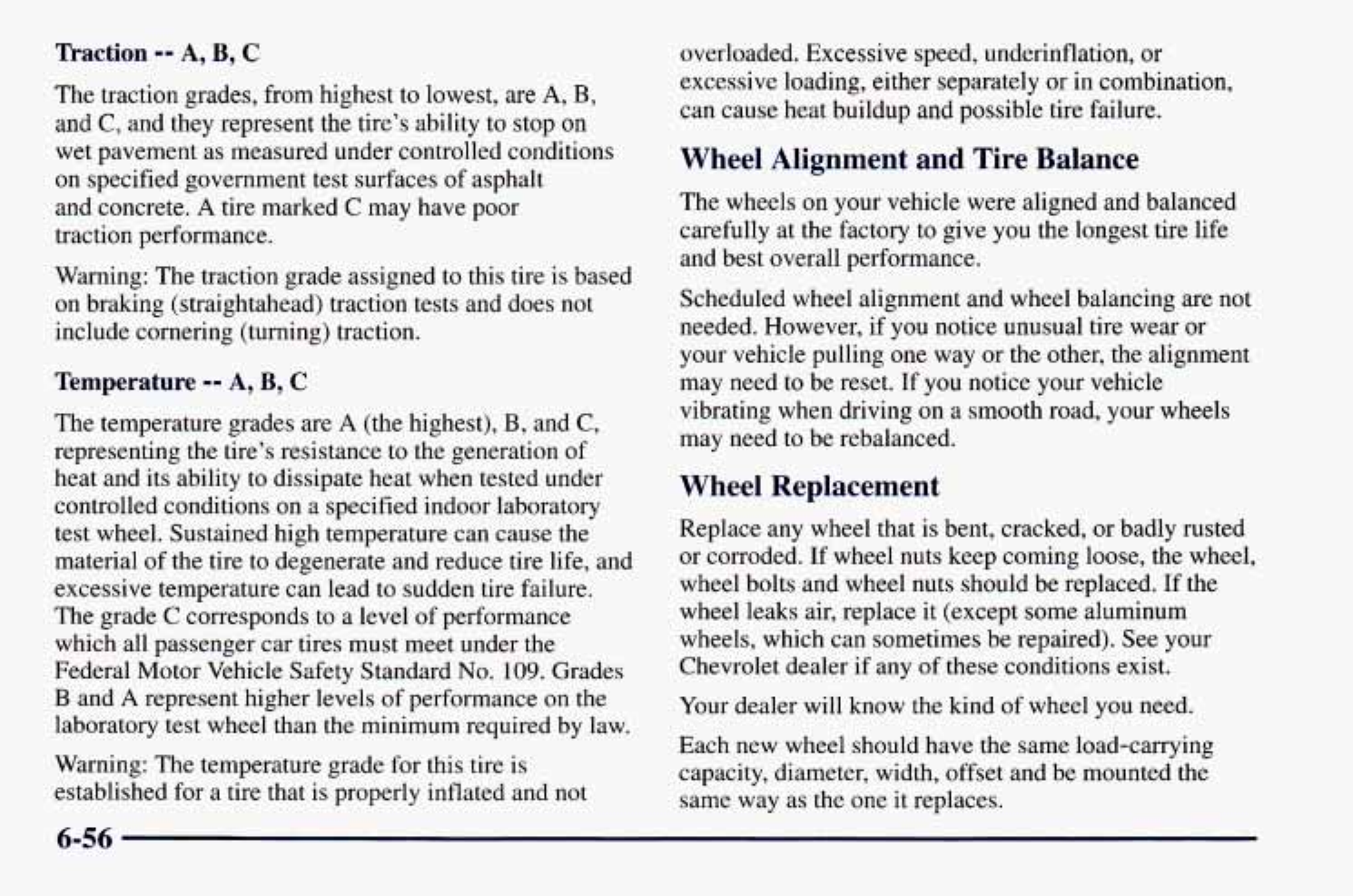
Traction
--
A,
B,
C
The traction grades, from highest
to
lowest,
are
A,
B,
and
C,
and they represent the tire’s ability to stop
on
wet pavement as measured under controlled conditions
on
specified government test surfaces of asphalt
and
concrete.
A
tire marked
C
may
have poor
traction performance.
Warning: The traction grade assigned to this tire is based
on braking (straightahead) traction tests and does not
include cornering (turning) traction.
Temper
’
----,
--
A,
B,
C
The temperature grades are
A
(the highest),
B,
and
C,
representing the tire’s resistance
to
the generation
of
heat and its ability
to
dissipate heat when tested under
controlled conditions on a specified indoor laboratory
test wheel. Sustained high temperature can cause the
material of the tire to degenerate and reduce tire life, and
excessive temperature can lead to sudden tire failure.
The grade
C
corresponds to
a
level
of
performance
which all passenger car tires must meet under the
Federal Motor Vehicle Safety Standard
No.
109.
Grades
B
and
A
represent higher levels
of
performance
on
the
laboratory test wheel than the minimum required by law.
Warning: The temperature grade for this tire is
established for a tire that is properly inflated and not
overloaded. Excessive speed, underinflation,
or
excessive loading, either separately or in combination,
can cause heat buildup and possible tire failure.
Wheel Alignment and Tire Balance
The wheels on your vehicle were aligned and balanced
carefully at the factory to give you the longest tire life
and best overall performance.
Scheduled wheel alignment and wheel balancing are not
needed. However, if
you
notice unusual tire wear or
your vehicle pulling one way
or
the other, the alipnment
may need
to
be reset.
If
you notice your vehicle
vibrating when driving on a smooth road, your wheels
may need to be rebalanced.
Wheel Replacement
Replace any wheel that is bent, cracked, or badly rusted
or corroded.
If
wheel nuts keep coming loose, the wheel,
wheel bolts and wheel nuts should be replaced. If the
wheel leaks air, replace it (except some aluminum
wheels, which can sometimes be repaired).
See
your
Chevrolet dealer if any of these conditions exist.
Your dealer will know the kind of wheel you need.
Each new wheel should have the same load-carrying
capacity, diameter, width, offset and be mounted the
same way as the one it replaces.
6-56


















